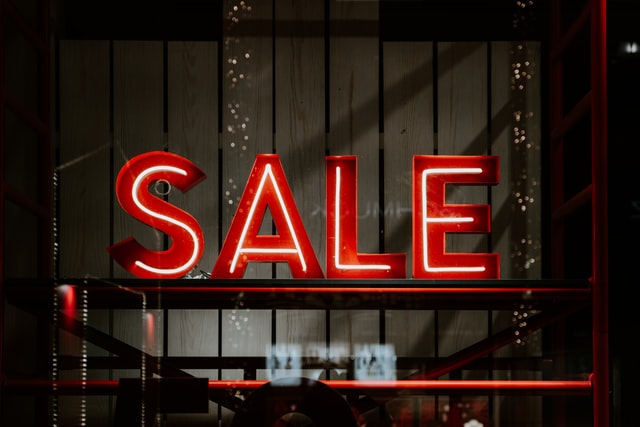It doesn’t. But we will get to it in a moment. First, let’s see why so many artists think that it is wrong and unfair when there is a site-wide sale and items with their art are sold for a discounted price.

Every few weeks every website that sells clothes runs a sale. And when that happens artists complain about it on Twitter, Facebook, and Reddit. Why? Well, when there is no sale, an artist gets, let’s say, $4 or $7 in royalties from a t-shirt sold with their design, but when there is a sale, an artist gets $1 – $2.
Let’s take Threadless as an example. When there is no sale an artist gets around 25% of the price of an item. But when there is a sale they get only 10%.
Now, you may ask, “Won’t artists make more money when there is a sale since more items are sold?” Yes, they do. More t-shirts are sold so artists make much more money during the sale, even though they get paid less per item.
How is it possible, then, that artist complain about it even if they make more money?
I am going to explain it with a story about “World of Warcraft”, which, on the off chance you don’t know that, is a video game. “World of Warcraft” developers didn’t want players to play too many hours in a row. So they devised a system where players got fewer experience points the longer they played. To get the usual number of experience points players needed to take a break and come back to the game later.
Players hated it. Gaining fewer experience points the longer they played felt like a punishment. To fix that, the developers changed it and implemented a resting mechanic. This means that when players are not playing the game, they gain a resting bonus. Then, when they finally come back to the game, they get more experience points based on the bonus they accumulated. The resting bonus gets used up over time, so after a few hours, players need to take a break again to restore it.
I haven’t played “World of Warcraft” but I heard this story here:
Those are the same systems, of course. The developers themselves even stated that those were the “same numbers seen from the opposite point of view.” It makes such a huge difference to think of something as a reward instead of punishment!
Now, back to designers. Designers think that the base price is the price when the item is not on sale. Then they get 25% of the price. If there’s a sale, designers get only 10%. It feels like a punishment and artists complain in Facebook groups about being treated unfairly.
What’s wrong with this situation and how to make artists see the situation from a different point of view? Can the solution from “World of Warcraft” be used here? Here are two things that any website working with artists should realize:
First, the base price of an item is not the same for a customer and for an artist. The base price for a customer is the full price, so, when there’s a sale, they feel they are rewarded for buying an item for less money: they get the item AND save money.
The base price, in an artist’s mind, should be the discounted price, not the full price. Why? Because the sale period is when artists sell the most items.
Second, don’t hide how much artists earn. Any website that advertises to artists that they make 25% of a price is guilty of making artists feel punished when they inevitably earn only 10% from items on sale.
I love Threadless, I do, I make a lot of money there and amazing people work there. However, look at this table, where Threadless claims that you get $7, or around 25%, per t-shirt:

There’s no mention of the 10% profit that an artist makes most of the time when their design is bought.
Of course, it’s not surprising that Threadless advertises the $7 that an artist makes from a $25 t-shirt. Threadless wants to pay artists a lot so that artists publish artwork on their website. And in the case of Threadless and Teepublic and a few other websites, I actually do believe that they want to pay artists fairly and support them.
The table looks nice but overpromises. Artists expect a 25% profit, but instead, when there is a sale, they earn a lot less than they thought they would, and so they feel punished.
How should this table look to make an artist feel rewarded instead of punished? There should be two columns:
- one column with a 10% profit for when an item is on sale,
- and another column with BONUS PROFIT for when an item is not on sale.
Threadless does an amazing thing here, which they don’t advertise at all. When an item is not on sale, they give artists a disproportionate percentage of additional profits. This is an opportunity to make artists feel rewarded.